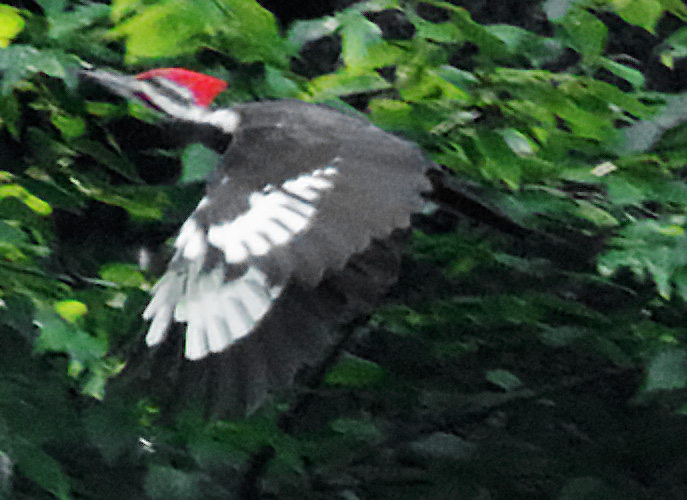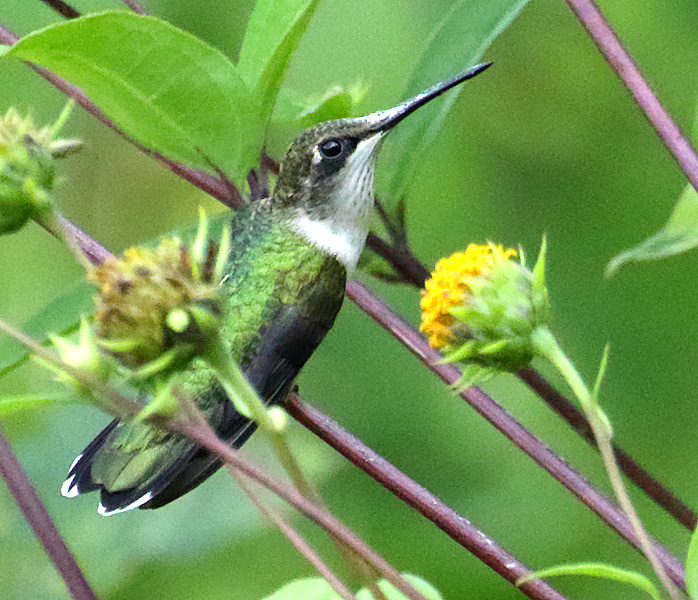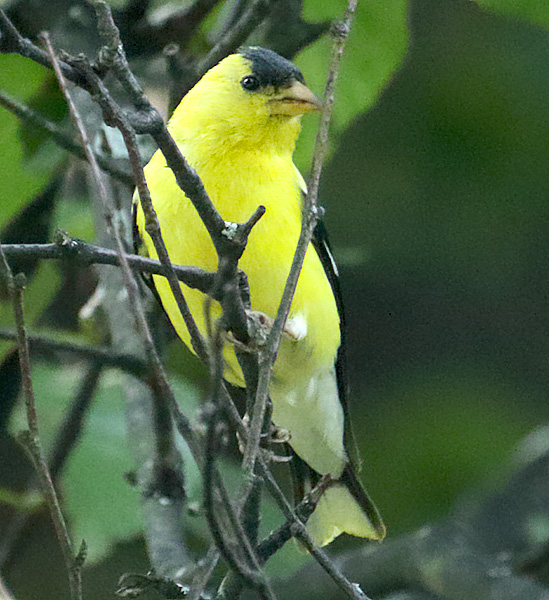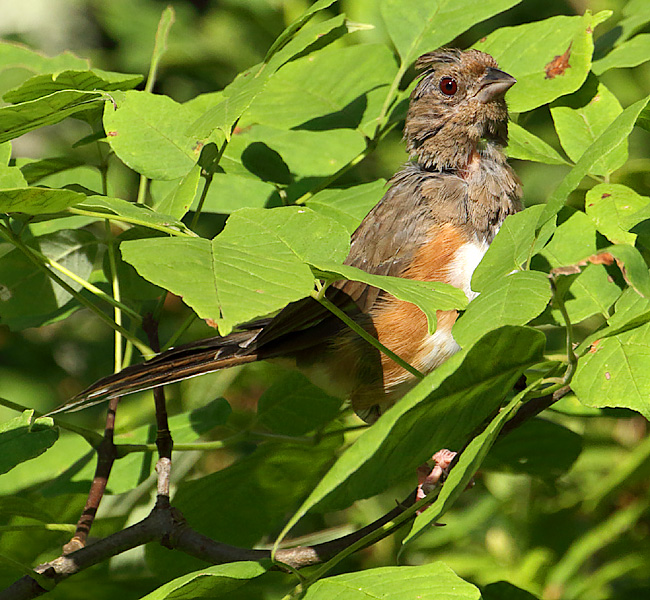
Male Hooded Warbler
New World warblers are some of the most sought after species because of their bold and colorful plumages (especially males in breeding plumage). Of the 120+ New World warbler species, 50+ can be seen in North America, and the exact number varies based on how many rare warbler species visitors from Central America that sometimes cross into the southern United States are included in the total.
Of these, 36 warbler species can be seen each year in central Virginia (I include Yellow-breasted Chat that has recently been moved out of the warbler family by ornithologists). Most of the species breed in the northern United States and Canada, but about half of them also breed here in Virginia, mostly in the cooler mountainous areas, and only one warbler species, Yellow-rumped, is a winter resident.
Many of these summer warblers are limited to very local areas and some can be extremely difficult to find. During spring and autumnal migration, flocks of mixed warbler species are often seen, and many Virginia birders look forward to these migration seasons as the best time to view warblers. Most warblers migrate during the night, forage in the morning, and rest in the later part of the day before moving on. Only one of these 36 warbler species, Connecticut, is only seen during autumn, as its usual spring migration route is west of Virginia. This route, combined with its secretive movements in dense vegetation, makes it the most difficult of all the warblers to find in Virginia.
During spring, when warblers are in their most colorful breeding plumage, they move quickly up to breeding grounds. Usually, males of the warbler species are the first to migrate, so that they can find the best breeding grounds, and then sing their songs from trees to attract mates. During the autumnal migration, warblers are not in such a hurry, and may spend a few days in the same area if there are plenty of insects and berries to fill up on before moving farther south. However, they are usually not singing, but making only chips and other short calls, if any at all.
Warblers are really tough to see, as they flit about quickly from branch to branch, often high up in dense tree canopies. I am lucky to have good high-frequency hearing, so I can hear most of their songs in the spring and summer, but need to watch for warblers moving about to find them in the autumn. There are a couple of other keys for finding warblers. They like the same habitat as much easier to hear chickadees and titmice, so listening for these species will often yield warblers. Also, if the area is dry, warblers like to forage near dripping water so that they can drink and bathe.
While different warbler species tend to migrate at somewhat different times of the spring and autumn, the average date for the first real sign of autumnal warbler migration in central Virginia is August 25th. There have been reports of mixed warbler flocks during the past week from New England to as far south as northern Virginia. Therefore, I decided to head up to my usual birding sites on the Blue Ridge Parkway.
I entered the parkway at its northern end, moved to parallel Route 610 near mm. 2, re-entered the parlway near mm. 4, and this time, continued past my usual stopping point (Hickory Springs Overlook, mm. 12) all the way to Love Gap (mm. 16). Although I ended up with 17 avian species, I only had one warbler species - Hooded, at Hickory Springs Overlook (mm. 12) where I have been seeing Hooded Warblers for the past few weeks. This time of year they aren't singing their usual song, but are making chink calls. I heard chink calls in the woods from three Hooderd Warblers, waited for a while, and then one of the Hooded Warblers appeared in the dark vegetation long enough for a few shots. I think that all of the other summer resident warblers from this section of the parkway have already moved on to the south. Perhaps migrating flocks will be here in a few days.

Male Hooded Warbler

Immature male Northern Cardinal

Pileated Woodpecker

Ruby-throated Hummingbird

American Goldfinch

Eastern Wood-Pewee

Eastern Wood-Pewee

Female Eastern Towhee

Red-eyed Vireo
I've photographed 44 of the New World warbler species. If you'd like to see my best warbler photos, click here.